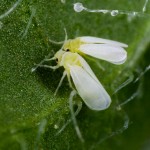The Rev. Dana Prom Smith, S.T.D.,
Ph.D. (11/12/12)

The
subjunctive mood, sadly, has pretty well passed out of general usage which
leaves us with only the indicative and imperative. The subjunctive is probably too sophisticated
for our modern times, enamored, as we are, with commands, dogmas, ideologies,
and certainties as though we know the truth.
Ironically, if we claim to know the truth, we’re trapped in our
certitudes and shielded from ever learning anything new. According to my high school Plain English Handbook, “The subjunctive
mood expresses doubt or wish or condition contrary to fact” as in “I wish I
were going home for Christmas.”
The
indicative mood is for statements and questions as in “I’m going home for
Christmas.” While the indicative is used
more for descriptions, the imperative is used for commands which assume
knowledge of some hidden truth.
Nowadays, one seldom
hears the subjunctive, seldom a doubt.
Almost all of the politicians speak in imperatives, especially the ones
whose nostrums have failed in the past.
Even horticulturalists speak in the imperative, promising success if their
instructions are executed. In addition,
the apocalyptic tenor of the times begets the imperatives of doom, delivered in
stringent tones with corded necks.
Bureaucrats,
academicians, religious authoritarians favor the imperative. Considering themselves experts, they’re
incapable of expressing doubt or uncertainty; however, most veteran gardeners favor
the subjunctive. I’ll choose a veteran
over an expert any day. Also, psychologically
the imperative is often used to cloak uncertainty. Gardening is subjunctive. No one is ever exactly sure what’s going to
happen.
Tomatoes
are subjunctive. Akin to children, tomatoes
seldom turn out as expected, sometimes for the better and sometimes “not so.” An Episcopal priest once offered a toast at a
wine tasting: “Wine makes all men handsome,
all women beautiful, and even makes one’s children promising.”
A tomato’s adolescence
is an iffy time along about late June or July.
A beautiful Siberian of ours, loaded with fruit, came down with white
flies, and spray it as I would early in the day before sunrise, they never went
away. We had to destroy it, lest it
infect the rest of our tomatoes which were the tastiest we’d ever grown, at
least according to meine Űberfrau who
said that they were almost as good as her father’s.
As
with all failures, I grieved at first.
Since my hope had been dashed, I felt either guilty or vindictive. Last spring I turned 85, and we had a big
party in Redondo Beach
However,
doubt implies faith. The natural process
didn’t collapse with the collapse of my Siberian. Faith isn’t the same thing as the certainty
implied in the imperative. Faith isn’t
knowledge, but rather an assumption that the natural process will be repeated,
so faith implies hope, as Saint Paul
In Shakespeare’s Macbeth, Banquo said to the three
witches, “If you can look into the seeds of time, and say which grain will grow
and which will not, then speak to me.”
They did, and what a tragedy it was.
Certainty isn’t always a good thing.
Of course, we
can’t learn anything worthwhile unless we first fail. Success tutors the arrogant. Next spring, I’ll start my tomatoes from
seed, and I’ll only plant the seeds of tomatoes that have done well before and
a couple new ones recommended by a veteran like Jim Mast. Most of all, I’ll be vigilant, wary of the
hazards of my tomatoes’ adolescence, those subjunctive cankers, blights, spots,
molds, rots, wilts, and white flies. If
you don’t handle grief well, tomatoes may not be your cup of tea.
Copyright © Dana Prom Smith
Dana Prom
Smith and Freddi Steele edit Gardening Etcetera. Smith emails at stpauls@npgcable.com, and blogs at http://highcountrygardener.blogspot.com.



.jpg)



